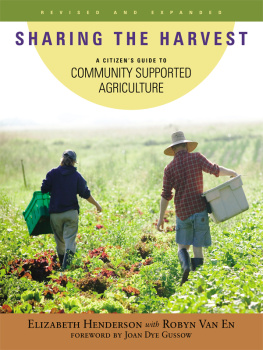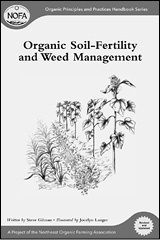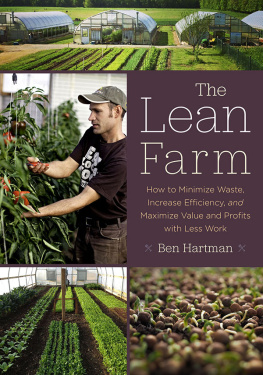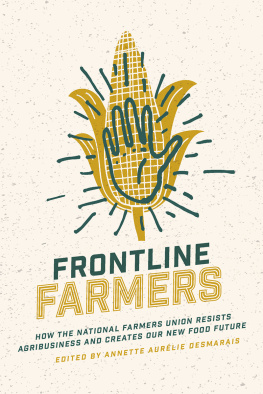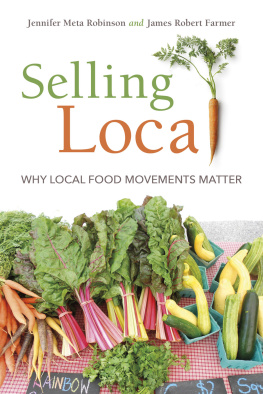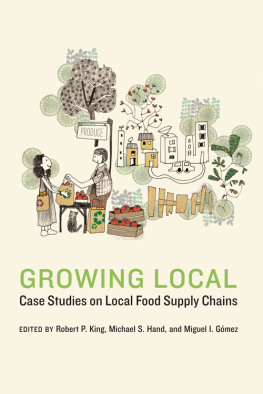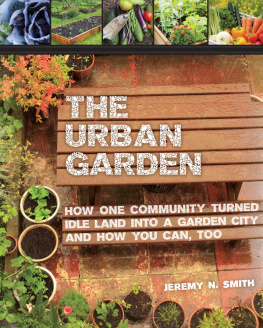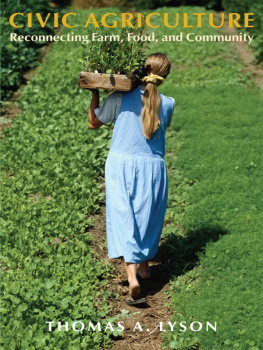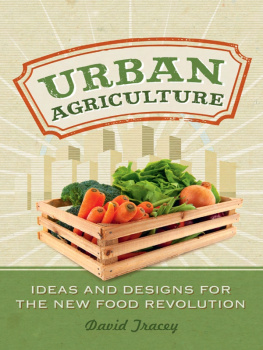NORTHEAST REGION SARE
Sustainable Agriculture Research and Education Program
The United States Department of Agriculture (USDA) Sustainable Agriculture Research and Education (SARE) Program works to increase knowledge aboutand help farmers adoptpractices that are economically viable, that are environmentally sound, and that enhance the quality of life for farmers, rural communities, and society as a whole. Authorized in the 1985 Farm Bill, SARE began funding competitive grants in 1988. Since then, it has funded more than twelve hundred projects aimed at improving the sustainability of farming. Through newsletters, books, Web sites, and other resources, SARE helps to spread information about innovative, practical, profitable, and ecological approaches to agriculture.
This bookthe result of partnerships with authors Elizabeth Henderson and Robyn Van En and publisher Chelsea Greenreflects Northeast SAREs commitment to supporting food production, processing, and marketing systems that sustain rural communities and support agricultural activities in the regions rural, urban, and suburban areas.
Farmers throughout the country are under tremendous pressuresfrom suburban development driving up the costs of farmland to high prices for many resources they need to low prices for their products. In addition, the food we eat is often grown far away from the tablethe typical produce is said to have traveled well over one thousand milesand less-fresh and lower-quality fruits and vegetables are often the result. The tremendous interest in Community Supported Agriculture (CSA) farms among farmers as well as the public is an indication that this approach has struck a chord with people who want high-quality fresh produce and also want to have a more direct connection with that most basic of human needsfood.
For more information, please contact SARE at Hills Building, University of Vermont, Burlington, VT 05405-0082. Phone: 802-6560471; Fax: 802-656-4656; E-mail: nesare@zoo.uvm.edu. Web site: http://www.uvm.edu/~nesare/
SHARING THE HARVEST
A CITIZENS GUIDE TO
Community Supported Agriculture
Revised and Expanded Edition
ELIZABETH HENDERSON
with
ROBYN VAN EN
Foreword by
JOAN DYE GUSSOW
CHELSEA GREEN PUBLISHING COMPANY
WHITE RIVER JUNCTION, VERMONT
Copyright 1999, 2007 by Elizabeth Henderson and Robyn Van En Illustrations copyright 1999 by Karen Kerney
All rights reserved. No part of this book may be transmitted in any form by any means without permission in writing from the publisher.
Developmental editor: Ben Watson
Copy editor: Janine Stanley-Dunham
Proofreader: Susan Barnett
Indexer: Peggy Holloway
Designer: Peter Holm, Sterling Hill Productions
Printed in the United States of America
Revised edition, November, 2007
10 9 8 7 6 5 4 3 2 1
Library of Congress Cataloging-in-Publication Data
Henderson, Elizabeth, 1943-
Sharing the harvest : a citizen's guide to Community Supported Agriculture / Elizabeth Henderson with Robyn Van En ; foreword by Joan Dye Gussow.
Rev. and expanded ed.
p. cm.
Includes bibliographical references.
eISBN: 978-1-6035-8075-5
1. Collective farms--United States. 2.Community gardens--United States. 3. Agriculture, Cooperative--United States. 4. Farm produce--United States--Marketing. 5. Agriculture--Economic aspects--United States. I. Van En, Robyn. II. Title.
HD1492.U6H46 2007
334'.6830973--dc22
2007021963
Our Commitment to Green Publishing
Chelsea Green sees publishing as a tool for cultural change and ecological stewardship. We strive to align our book manufacturing practices with our editorial mission and to reduce the impact of our business enterprise in the environment. We print our books and catalogs on chlorine-free recycled paper, using soy-based inks whenever possible. This book may cost slightly more because we use recycled paper, and we hope youll agree that its worth it. Chelsea Green is a member of the Green Press Initiative (www.greenpressinitiative.org), a nonprofit coalition of publishers, manufacturers, and authors working to protect the worlds endangered forests and conserve natural resources.
Sharing the Harvest was printed on 60# Joy White, a 30-percent postconsumer-waste old-growth-forest-free recycled paper supplied by Thomson-Shore, Inc.
Chelsea Green Publishing Company
Post Office Box 428
White River Junction, VT 05001
(802) 295-6300
www.chelseagreen.com
To Robyn, and to our sons, David and Andy, the next
generation, who make it worthwhile to struggle for
a peaceful and sustainable world.
CONTENTS
by Joan Dye Gussow
by Robyn Van En
by Robyn Van En
by Cayce Hill and Hiroku Kubota
by Beth Holtzman
by Nancy Hanson
A cross this country, a movement is spreading that acknowledges a long-ignored reality: Most of what we pay for our food goes to companies that transport, process, and market what comes off the farm, not to farmers themselves. The people who actually grow food dont get paid enough to keep on doing it. And so, from Maine to California, some farmers are being supported by voluntary communities of eaters organized to pay growers directly for what they produce. Bypassing the supermarket, the middlemen, and the international transportation system, these folks are getting fresh local produce in season, at reasonable prices. This is a book about eater communities who are buying what their local farmers grow, and this system is calledappropriatelyCommunity Supported Agriculture.
If this is the first time youve heard of Community Supported Agriculture (CSA), you should turn immediately to the first chapter. There you can discover why various farmers and eaters are joining these groups, and learn what some of them experience as they strive for wholesome food and financial security. If you have heard of CSAs but know little about them, then you need to study this recounting of the many different ways in which producers and consumers have come together to find mutually satisfactory solutions to their financial, social, and culinary needs. And finally, if you are an active member of a CSA farm, you surely need to sit down and spend some time with this book written by Liz Henderson, farmer extraordinaire, and Robyn Van En, the late, great lady of the CSA movement. From them you can learn how to solve the problems that will crop up (if they have not already done so) as you and your co-sharers try to find ways of making good food available outside the dominant marketplace, for the long-term benefit of everyone.
I was two-thirds of the way through the manuscript of this books first edition when I went to a meeting of core group members of several New York City CSAs. (Yes, there wereand still arepeople in the heart of the metropolis getting food directly from farmers.) As I listened to these pioneers seeking help from one another in resolving emerging dilemmas, I kept wishing they had this book. Under the major headings "Getting Started, "Getting Organized, "The Food, and "Many Models, they would have found ideas on everything from "How to Choose a Farmer and "Acquiring Land through "Farmer Earnings and "Start-up Expenses to "Distributing the Harvest, "Regional Networking, and "Including Low-Income Members.
In listing these topics, I realize that I risk making this book sound like a dull instruction manual or a guidebook to CSAs. It is a guide, and it is instructive, but it is far more than either of those, and it is surely not dull. It is, in fact, a delight to read, since the woman who finally brought it together, after the original author succumbed to an unacceptably early death, is a strong and gifted writer. She recognizes other good writers when she reads them and articulate speakers when she hears them, and quotes many of them when it is appropriateincluding many of the participants in these enterprises.

